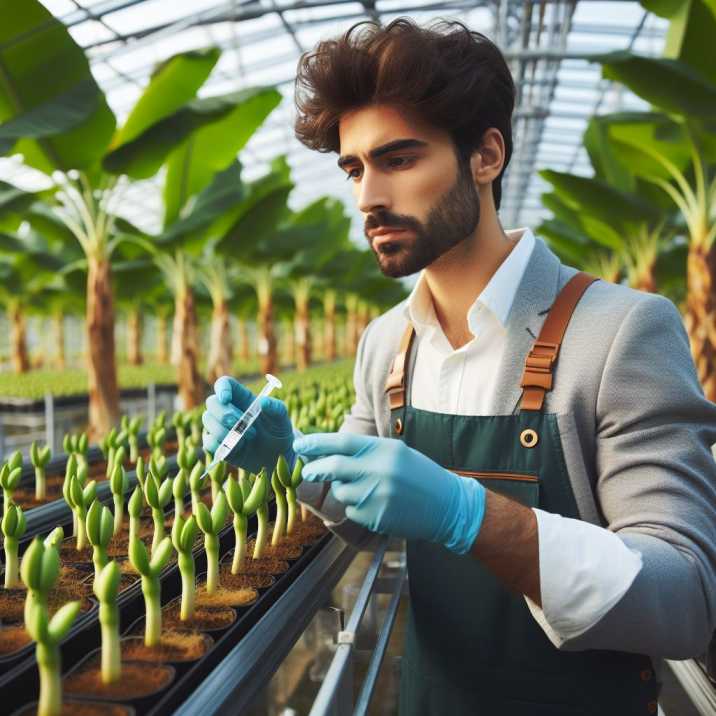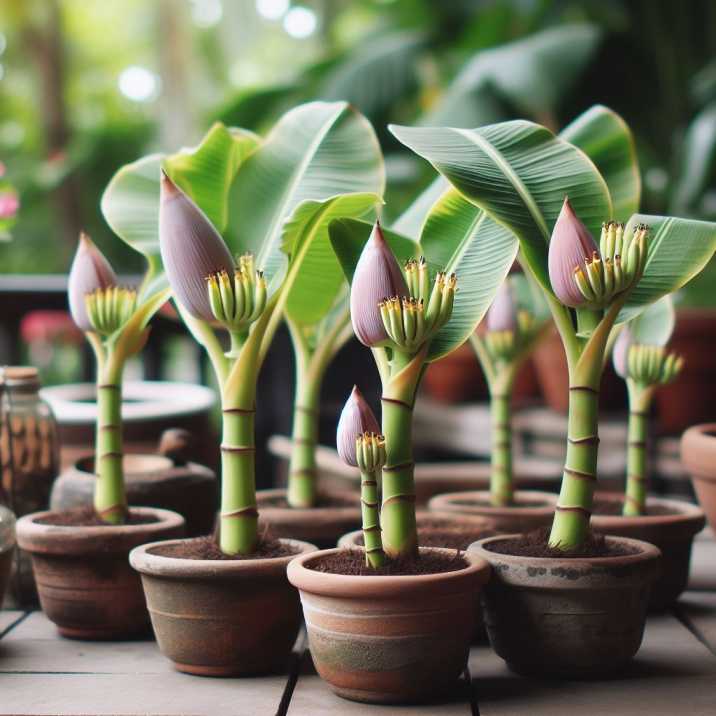Introduction
Table of Contents
Growth of Baby Bananas in Different Climates
In the enchanting world of tropical fruits, baby bananas stand out as miniature marvels that captivate with their sweetness and delicate size. These tiny wonders, also known as finger bananas, Lady Finger bananas, or sugar bananas, possess a unique ability to adapt and flourish in a multitude of climates and regions. From the humid tropics to the subtropical landscapes, the growth journey of baby bananas unveils a tapestry of natural wonders and agricultural ingenuity.
The Evolutionary Triumph: Origins and Adaptations
Origins: Baby bananas trace their origins to the fertile regions of Southeast Asia, where they have been cultivated for centuries. Believed to be one of the earliest banana varieties domesticated by humans, these diminutive fruits hold a significant place in both culinary traditions and agricultural practices.
Adaptations: One of the remarkable traits of baby bananas lies in their adaptability to diverse climates. Unlike their larger counterparts, such as Cavendish or plantains, baby bananas thrive in a broader range of environments, spanning from tropical rainforests to semi-arid zones. This adaptability is attributed to their genetic makeup, which allows them to withstand fluctuations in temperature, humidity, and soil conditions.

Nurturing Growth: Climatic Factors and Agricultural Practices
Temperature: Baby bananas exhibit a preference for warm temperatures, ideally ranging between 75°F to 85°F (24°C to 29°C). However, they can tolerate slightly cooler conditions, making them suitable for cultivation in subtropical regions where temperatures may vary seasonally.
Humidity: High humidity levels are crucial for the healthy growth of baby bananas, as they originate from tropical regions characterized by abundant rainfall and moisture. Adequate irrigation and mulching are employed in cultivation practices to maintain optimal soil moisture and humidity levels.
Soil Conditions: Baby bananas thrive in well-drained, fertile soils rich in organic matter. Sandy loam or loamy soils with a pH range of 5.5 to 7.0 provide an ideal growing medium for these fruits. However, they can adapt to a variety of soil types, including sandy or clay soils, with proper amendments and management.
Sunlight: While baby bananas require ample sunlight for photosynthesis and fruit development, they also benefit from partial shade, especially during the intense midday sun in tropical climates. Planting them alongside taller trees or providing shade cloth helps protect the delicate foliage from excessive sunlight.
Cultural Practices: Cultivating baby bananas involves regular fertilization, mulching, and irrigation to promote healthy growth and fruit production. Pruning of dead leaves and pests management are essential for maintaining plant vigor and minimizing disease incidence.

Global Cultivation: From Tropics to Subtropics
Tropical Regions: In their native habitats across Southeast Asia, baby bananas flourish in the lush rainforests of countries like Thailand, Indonesia, and the Philippines. The warm, humid climate provides an ideal environment for year-round cultivation, ensuring a continuous supply of fresh fruit.
Subtropical Climates: Beyond the tropics, baby bananas have found a home in subtropical regions characterized by milder winters and moderate temperatures. Countries like Australia, South Africa, and parts of the Mediterranean basin have successfully cultivated these fruits, leveraging their adaptability to varying climatic conditions.
Greenhouse Cultivation: In regions with colder climates or limited arable land, greenhouse cultivation offers a viable solution for growing baby bananas. Controlled environments provide optimal conditions for year-round production, extending the availability of these exotic fruits to markets worldwide.
Conclusion
The growth journey of baby bananas across different climates and regions unveils a testament to nature’s resilience and human ingenuity. From their origins in tropical rainforests to their adaptation to subtropical landscapes, these miniature marvels continue to enthrall with their sweetness and versatility. Through careful cultivation practices and agricultural innovation, farmers worldwide harness the adaptability of baby bananas to meet the growing demand for exotic fruits in diverse markets.
FAQs About Baby Banana Growth:
- Are baby bananas genetically different from regular bananas?
- Yes, baby bananas are a distinct variety with smaller fruit size and slightly sweeter flavor compared to regular bananas.
- Can baby bananas tolerate frost or cold temperatures?
- Baby bananas are sensitive to frost but can tolerate slightly cooler temperatures compared to other banana varieties.
- How long does it take for baby bananas to ripen after flowering?
- Baby bananas typically ripen within 60 to 90 days after flowering, depending on climatic conditions and cultural practices.
- Do baby bananas require special pruning techniques?
- Pruning dead or diseased leaves is essential for maintaining plant health, but baby bananas generally require minimal pruning compared to larger banana varieties.
- Can baby bananas be grown in containers or pots?
- Yes, baby bananas can be grown in containers or pots, provided they receive adequate sunlight, water, and nutrients.
